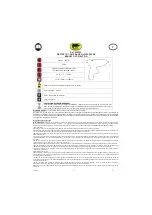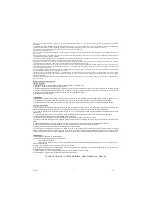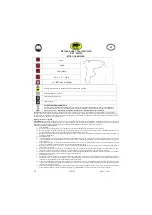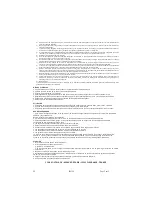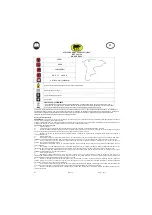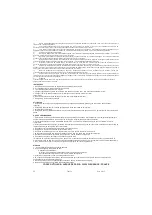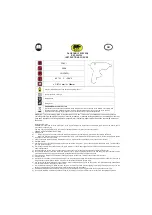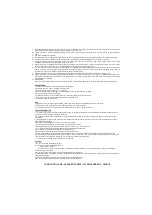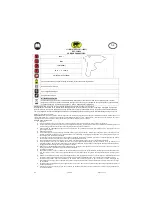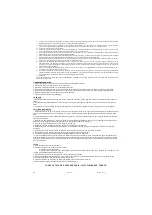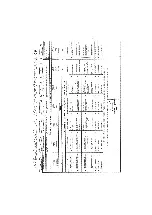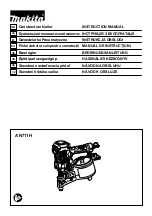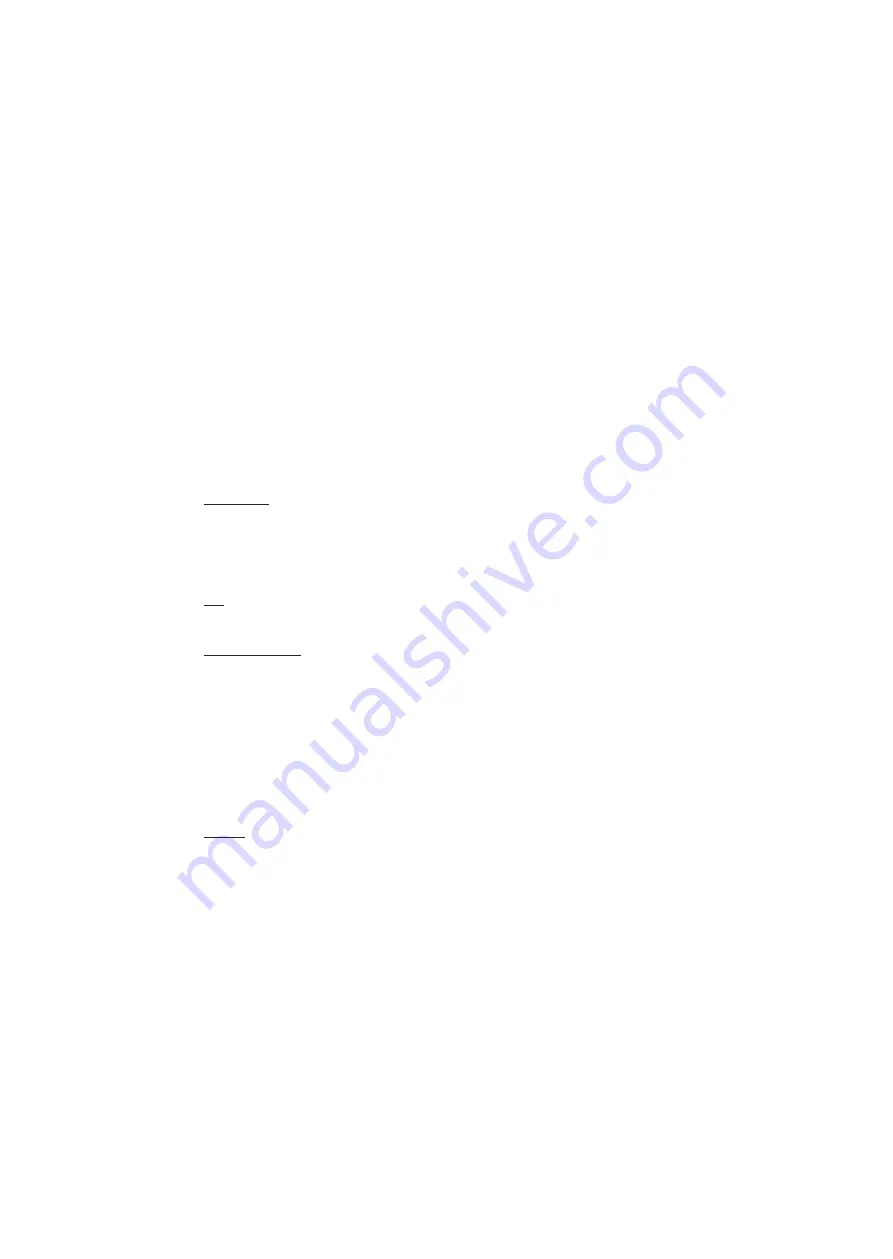
f) Wear appropriate clothing. Do not wear flowing clothes or jewellery. Keep hair, clothes and gloves at a distance from moving parts.
Flowing clothes, jewellery and long hair can get caught up in moving parts.
g) If there is provision for dust-collecting equipment, make sure it is connected and correctly used. This will reduce the risks caused by
dust.
4) Use and maintenance of the tool.
a) Do not force the tool. Always use the right tool for the job. The right tool will do the job it was intended to do, better and more safely.
b) Do not use the tool if the ON/OFF switch is not working. Tools without switches are dangerous and should be repaired.
c) Unplug the female plug from the mains before any adjustment; change of accessories, and before putting away. These safety
measures reduce the risk of accidentally starting up the tool.
d) Always store tools unplugged and out of the reach of children, and refuse access to anyone unfamiliar with either the tool or these
safety rules and instructions for use. Tools are dangerous in the hands of inexperienced users.
e) The tool must be correctly maintained. Check that the moving parts are correctly aligned and mobile, that there are no broken parts,
and for any other eventuality that could jeopardise the smooth-running of the tool. If the tool becomes damaged, make sure it is
repaired before you use it. Many accidents are due to badly-maintained tools.
f) Make sure cutting tools are kept sharp and clean. Well-maintained cutting tools are less likely to block, and easier to use.
g) Please use this tool, as well as any accessories and blades, etc., as per the instructions and in the way intended for this type of tool,
bearing in mind both working conditions and the job in hand. Using the tool for operations other than those it is intended for could give
rise to dangerous situations.
5) Maintenance
a) Have your tool maintained by a qualified repairer, who only uses identical spare parts. This will ensure that the tool works safely.
INSTRUCTIONS:
1. Insert the glue stick into the ring at the back of the glue gun.
2. Place the gun on a piece of cardboard or hardboard.
3. Connect. Leave it to warm up for 7 to 10 minutes.
4. Exert a light pressure on the trigger so as to apply the glue onto the surface to be glued.
There is no need to spread out the glue.
5. Press down hard on the two surfaces. Realign if necessary and press down hard again.
6. The two surfaces will be glued together perfectly two minutes later.
7. Disconnect once the job is done.
USE:
1. The glue gun can be used to glue all wood, plastic, and fabric, and paper, cardboard and ceramic surfaces.
2. It can also be used to stop a hole in a bucket or guttering or for listing purposes.
3. The gun is also useful for restoring furniture, fitting carpeting in cars, or tiles in bathrooms.
USEFUL INFORMATION:
1. For good quality gluing, the surfaces to be glued should be at a higher temperature than the ambient temperature and exposed to
sunlight. The same rule applies to gluing of metals.
2. Glue becomes liquid when the temperature rises above 85ø and should not be used for objects which do not resist such a high
temperature.
3. The glue is able to replace nails, clips, adhesive tapes and liquids but should never be used for any kind of fixture which could be
used to hold heavy weights.
4. Surfaces to be glued should be clean and dry and non-greasy.
5. Switch off, if the glue gun has not been used for more than 30 minutes.
6. Change the glue stick, and then wait a few minutes for it to warm up. Do not force it in.
7. You can remove the small particles of glue with the pre-heated point of a knife.
8. Any residue can be removed with heat or covered with paint.
9. Small drops of glue can be easily removed once they have cooled.
10. If too much pressure is exerted on the glue stick, the conduit can become blocked. If this happens, heat the glue gun for ten
minutes and remove the glue stick. If the stick has gone in too far, take another one, heat one end to melting point on the nozzle, push
it into the conduit until it sticks to the original one, and then pull it out by twisting gently.
11 This tool must be placed on its support when it is not used.
CAUTION:
1. Do not insert paste or adhesive liquids.
2. If the glue reaches a temperature of 200°
a) Be careful of burns!
b) In the event of burning, rinse thoroughly in cold water for several minutes. Do not attempt to remove the glue immediately.
Consult a doctor if necessary.
3. Do not touch either the conduit or the melted glue without wearing gloves.
4. If the electric cable is damaged, it must be replaced by the manufacturer, his after-sales service or a similar person of qualification in
order to avoid a danger.
5. Place the apparatus on its base after use and let cool it before arranging it;
6. Do not leave the apparatus without monitoring when it is under tension.
COGEX OUTILLAGE –AVENUE DE PARIS – 32500 FLEURANCE - FRANCE
Summary of Contents for 500326
Page 12: ......


